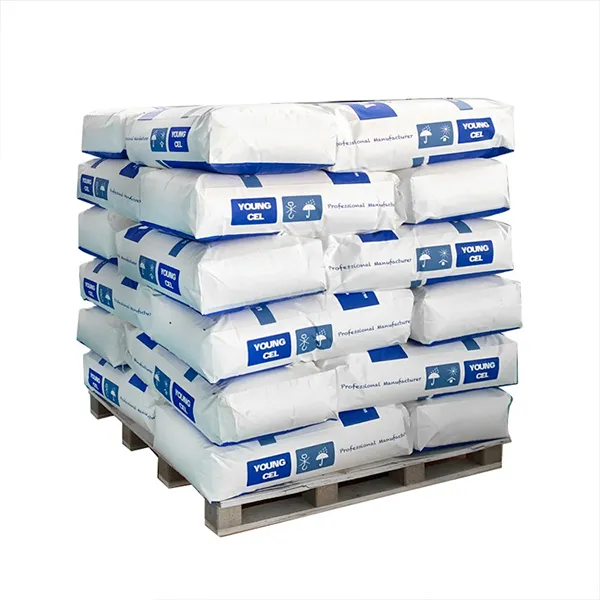The Use of HPMC in Construction A Game Changer
Hydroxypropyl Methylcellulose (HPMC) has gained significant traction in the construction industry due to its versatile properties and multifunctional benefits. As a semi-synthetic polymer derived from cellulose, HPMC plays a crucial role in various construction applications, offering enhanced performance and improved workability in materials such as mortars, plasters, and tile adhesives. This article aims to explore the uses and advantages of HPMC in construction, shedding light on its transformative impact on the industry.
What is HPMC?
HPMC is a non-ionic, water-soluble polymer that belongs to a class of compounds known as cellulose ethers. Its unique structure allows it to form a gel-like consistency when mixed with water, making it an ideal additive in construction materials. HPMC is typically available in various grades, each designed for specific applications in construction, offering different viscosities, solubilities, and gel strengths.
Applications of HPMC in Construction
1. Cementitious Materials One of the most common applications of HPMC is in cement-based products like mortars and plasters. When added to these materials, HPMC improves their flow characteristics, allowing for better workability and easier application. It helps in achieving a smooth finish, which is essential for aesthetic appeal and structural integrity.
2. Adhesives and Sealants HPMC is widely utilized in tile adhesives and sealants due to its excellent bonding properties. It enhances the adhesion between different surfaces, ensuring that tiles and other materials stay securely in place. The water-retention properties of HPMC also prevent premature drying, giving users more time to adjust their placements effectively.
3. Self-Leveling Compounds In the production of self-leveling compounds, HPMC acts as a critical stabilizing agent. It helps maintain the desired consistency, allowing the compound to flow and settle evenly across surfaces. This is particularly advantageous in flooring applications, where a level surface is imperative for both function and aesthetics.
4. Plaster and Render HPMC contributes significantly to the performance of plaster and render formulations. Its water-retention capabilities ensure that the plasters do not dry out too quickly, allowing for optimal setting times and reducing the risk of cracks. This enhancement is essential for maintaining durability and finish quality over time.
5. Paints and Coatings In the realm of paints and coatings, HPMC is employed as a thickening agent, providing improved viscosity and stability. It also aids in the dispersion of pigments, resulting in a uniform color and finish.
hpmc used in construction

Advantages of Using HPMC
The incorporation of HPMC into construction materials presents numerous benefits
- Improved Workability HPMC enhances the overall workability of construction mixes, making them easier to handle and apply, which is particularly beneficial for on-site work.
- Water Retention Its excellent water-retention properties prevent materials from drying too quickly, reducing the risk of cracking and improving the longevity of structures.
- Enhanced Adhesion HPMC promotes better adhesion between various materials, ensuring a strong bond that withstands physical and environmental stresses.
- Versatility Due to its adaptability, HPMC can be tailored for various applications, making it suitable for different types of construction projects.
- Eco-Friendly As a cellulose derivative, HPMC is a more environmentally friendly option compared to synthetic additives, aligning with the industry's growing focus on sustainability.
Conclusion
HPMC is undoubtedly a game changer in the construction industry. Its multifaceted advantages not only improve the performance of construction materials but also enhance the overall efficiency of construction processes. As the industry continues to evolve, the reliance on innovative additives like HPMC will be pivotal in meeting the increasing demands for high-quality, durable, and sustainable construction practices. Thus, understanding and utilizing HPMC effectively can lead to significant advancements in building methodologies and project outcomes.
-
Rdp Powder: Key Considerations for Wholesalers in the Building Materials IndustryNewsJul.08,2025
-
Key Considerations for Wholesalers: Navigating the World of Hpmc - Based ProductsNewsJul.08,2025
-
Hpmc Detergent: Key Considerations for WholesalersNewsJul.08,2025
-
Key Considerations for Wholesalers: China Hpmc For Tile Adhesive, Coating Additives, Concrete Additives, and MoreNewsJul.08,2025
-
Crucial Considerations for Wholesalers: Navigating the World of Construction MaterialsNewsJul.08,2025
-
Key Considerations for Wholesalers Sourcing Additive For Cement, Additive For Concrete, Additive For Putty from Additive Manufacturer Shijiazhuang Gaocheng District Yongfeng Cellulose Co., Ltd.NewsJul.08,2025




